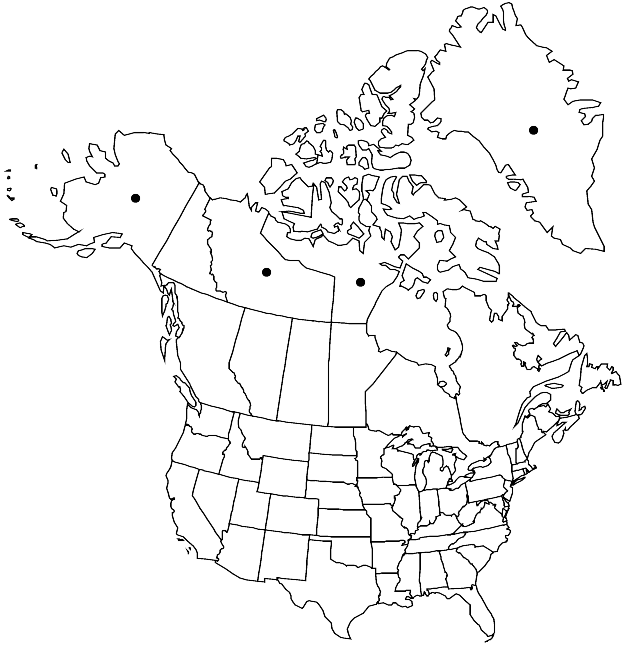Orthothecium acuminatum
Bryoph. Itin. Pol. Norv., 126, plate 1, fig. 4. 1906.
Plants very small, in tufts, brownish proximally, golden green distally. Stems 3–4 cm, 0.5 mm wide, erect to ascending, sparsely branched. Leaves closely appressed-imbricate, straight, broadly ovate, not or slightly plicate, 0.6–0.8 mm; margins plane, slightly serrate distally; apex abruptly very short-acuminate to apiculate; ecostate; basal laminal cells shorter than medial cells, deeply pigmented; medial cells oblong to oblong-rhombic, 35–40 × 9 µm. Specialized asexual reproduction absent. Sporophytes unknown.
Habitat: Wet calcareous habitats, Arctic tundra
Elevation: low to moderate elevations
Distribution

Greenland, N.W.T., Nunavut, Alaska.
Discussion
Orthothecium acuminatum is distinguished by stems 0.5 mm wide and up to 4 cm long, with straight, broadly ovate, abruptly short-acuminate to apiculate leaves. The branches are often slender and stoloniferous, bearing minute leaves. The species is known in mainland North America only from a few localities in the Northwest Territories and one locality in Alaska. W. A. Weber (pers. comm. to R. R. Ireland) suggested that O. diminutivum (Grout) H. A. Crum & L. E. Anderson, described from Colorado, is synonymous with Isopterygiopsis pulchella (Hedwig) Z. Iwatsuki.
Selected References
None.